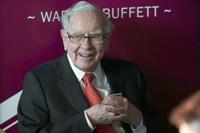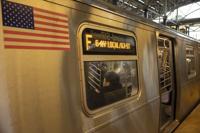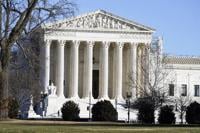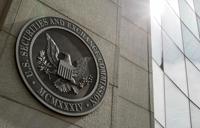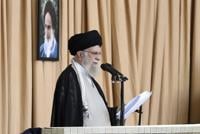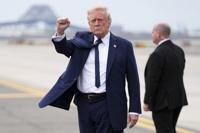OMAHA, Neb. (AP) — Billionaire investor Warren Buffett said Saturday that he wants to step down as chief executive of Berkshire Hathaway at the end of the year. The revelation came as a surprise because the 94-year-old had previously said he did not plan to retire.
Buffett, one of the and most accomplished investors, took control of Berkshire Hathaway in 1965 when it was a textiles manufacturer. He turned the company into a conglomerate by finding other businesses and stocks to buy that were selling for less than they were worth.
His success made him a Wall Street icon. It also earned him the nickname “Oracle of Omaha,” a reference to the Nebraska city where Buffett was born and chose to live and work.
Here are some of his best and worst investments over the years:
Buffett’s Best
— ��ɫtv Indemnity and ��ɫtv Fire & Marine: Purchased in 1967, the company was one of Buffett’s first insurance investments. Insurance float — the premium money insurers can invest between the time when policies are bought and when claims are made — provided the capital for many of Berkshire’s investments over the years and helped fuel the company’s growth. Berkshire’s insurance division has grown to include Geico, General Reinsurance and several other insurers. The float totaled $173 billion at the end of the first quarter.
— Buying blocks of stock in American Express, and Bank of America at times when the companies were out of favor because of scandals or market conditions. Collectively, the shares are worth over $100 billion more than what Buffett paid for them, and that doesn’t count all the dividends he has collected over the years.
— Apple: Buffett long said that he didn’t understand tech companies well enough to value them and pick the long-term winners, but he started buying in 2016. He later explained that he bought more than $31 billion worth because he understood the iPhone maker as a consumer products company with extremely loyal customers. The value of his investment grew to more than $174 billion before Buffett started selling Berkshire Hathaway's shares.
— BYD: On the advice of his late investing partner Charlie Munger, Buffett bet big on the genius of BYD founder Wang Chanfu in 2008 with a $232 million investment in the maker. The value of that stake soared to more than $9 billion before Buffett began selling it off. Berkshire’s remaining stake is still worth about $1.8 billion.
— See’s Candy: Buffett repeatedly pointed to his 1972 purchase as a turning point in his career. Buffett said Munger persuaded him that it made sense to buy great businesses at good prices as long as they had enduring competitive advantages. Previously, Buffett had primarily invested in companies of any quality as long as they were selling for less than he thought they were worth. Berkshire paid $25 million for See’s and recorded pretax earnings of $1.65 billion from the candy company through 2011. The amount continued to grow but Buffett didn’t routinely highlight it.
— Berkshire Hathaway Energy: Utilities provide a large and steady stream of profits for Berkshire. The conglomerate paid $2.1 billion, or about $35.05 per share, for Des Moines-based MidAmerican Energy in 2000. The utility unit subsequently was renamed and made several acquisitions, including PacifiCorp and NV Energy. The utilities added more than $3.7 billion to Berkshire’s profit in 2024, although Buffett has said they are now worth less than they used to be because of the liability they face .
Buffett’s Worst
— Berkshire Hathaway: Buffett had said his investment in the Berkshire Hathaway textile mills was probably his worst investment ever. The textile company he took over in 1965 bled money for many years before Buffett finally shut it down in 1985, though Berkshire did provide cash for some of Buffett’s early acquisitions. Of course, the Berkshire shares Buffett began buying for $7 and $8 a share in 1962 are now worth $809,350 per share, so even Buffett’s worst investment turned out OK.
— Dexter Shoe Co.: Buffett said he made an awful blunder by buying Dexter in 1993 for $433 million, a mistake made even worse because he used Berkshire stock for the deal. Buffett says he essentially gave away 1.6% of Berkshire for a worthless business.
— Missed opportunities. Buffett said that some of his worst mistakes over the years were the investments and deals that he didn’t make. Berkshire easily could have made billions if Buffett had been comfortable investing in Amazon, Google or Microsoft early on. But it wasn’t just tech companies he missed out on. Buffett told shareholders he was caught “sucking his thumb” when he failed to follow through on a plan to buy 100 million Walmart shares that would be worth nearly $10 billion today.
— Selling banks too soon. Not long before the COVID pandemic, Buffett seemed to sour on most of his bank stocks. Repeated scandals involving Wells Fargo gave him a reason to start unloading his 500 million shares, many of them for around $30 per share. But he also sold off his JP Morgan stake at prices less than $100. Both stocks have more than doubled since then.
— Blue Chip Stamps: Buffett and Munger, Berkshire’s former vice chairman, took control of Blue Chip in 1970 when the customer rewards program was generating $126 million in sales. But as trading stamps fell out of favor with retailers and consumers, sales steadily declined; in 2006, they totaled a mere $25,920. However, Buffett and Munger used the float that Blue Chip generated to acquire See’s Candy, Wesco Financial and Precision Castparts, which are all steady contributors to Berkshire.


